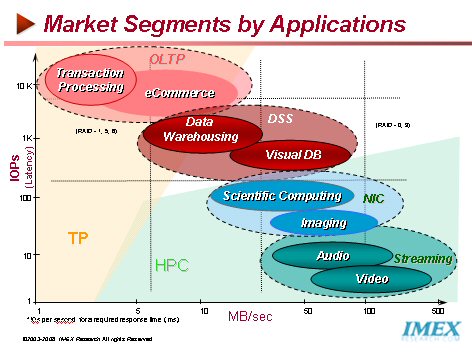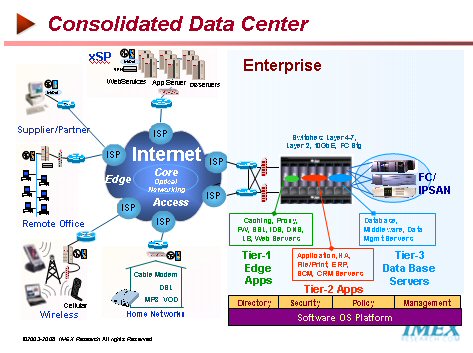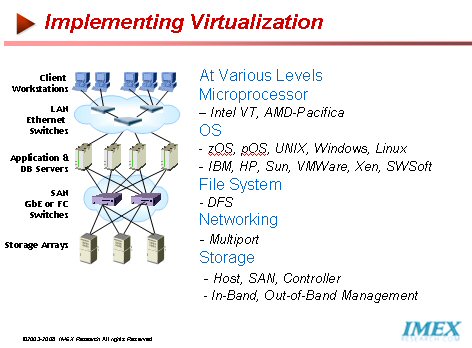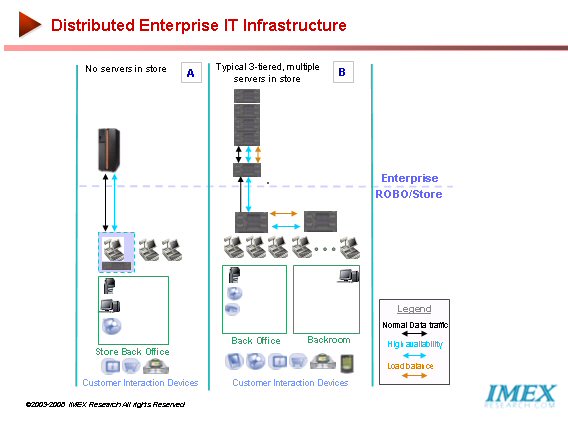| Application Aware DataCenter Infrastructure Click on Executive Summary, Table of Contents and Order Form for additional information. |
| Next-Gen Data Centers
Content-based QOS
As the issue of power and cooling heats up, companies must carefully evaluate their data center planning. A simple cooling unit and a raised floor just would not cut it anymore. One must now consider implementing hot aisle and cold aisle design, ceiling plenums, racks with built-in cooling and supplemental cooling. Blades are here to stay, now the issue is how to control the ever increasing operating costs. Aside from data center design, it is equally necessary increase the utilization of resources already in place, and that is where virtualization provides a multi-dimensional solution.
Application intelligence can be distributed across multiple network-based platforms by application-layer routing protocols. And, in principle, these systems are simpler from an operational perspective because the use of dynamic routing protocols at the application layer provides autoprovisioning of new users and services without extensive manual configuration. At the most basic level, application-aware networking refers to the intelligent network-based processing of application-layer content – for example, doing message routing based on content, such as by reading a food-service order to route it to the correct airport terminal. Application-aware networking products are not the same as Layers 4 to 7 switches, or content networking products. Such products typically switch on specific fields in the HTTP header (for example, the URI ), but they don't look into the application-layer payload itself. But now Cisco Systems, Juniper Networks, Microsoft, and a host of startups are meddling with nature by selling programmable platforms that can understand and process the data running over them, moving smarts back from servers and other endpoints. Cisco has set its sights first on shattering servers into pools of resources, like CPUs and memory, that are networked. It envisages a future in which the enterprise data center is reduced to little more than a virtual machine running on a giant switch--which, of course, it will provide. Juniper is giving its switches an API that third-party applications can access. 3Com is partnering with VMware to put virtual servers inside routers, and startups are scheming to steal the smarts from a huge variety of endpoints, from radio frequency identification readers to wireless sensors. Even IBM is joining the trend, selling appliances that off-load XML processing from servers and accelerate its WebSphere middleware using dedicated silicon.
While a single application or appliance may not need enough bandwidth to justify a switch slot, multiple applications or virtual appliances aggregated together are another matter. While a traditional architecture might use a 16-port Gigabit Ethernet module to connect one switch to 16 servers, the virtual data center would put 16 virtual machines right on the module. These VMs will have little relation to what we now think of as servers. For maximum flexibility, workloads must be able to move among servers--or switches--without necessarily dragging data with them, so they won't contain hard disks, relying instead on storage area networks. Cisco thinks the same will happen to memory: It will migrate outside the server or VM, requiring a new type of network to link memory and CPU Next-Gen Data Centers Generally speaking, application-aware storage is a policy manager implemented as a software layer installed on top of storage, and on top of storage management utilities. The policy manager extracts the established technical rules and business policies necessary to make rudimentary decisions. "A policy manager is no good unless it's got good, viable rules and information to act upon those rules," Schulz says. "This allows the policy manager [application-aware storage software] to act upon those rules." This report is simply a must have for those wishing to reduce the overall costs of their Data Center.
|
| Click on the following for additional information or go to http://www.imexresearch.com IMEX Research, 1474 Camino Robles San Jose, CA 95120 (408) 268-0800 http://www.imexresearch.com |






